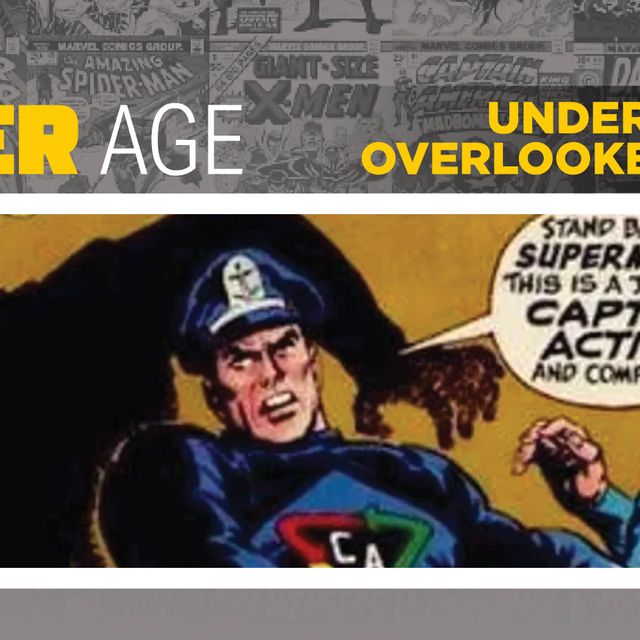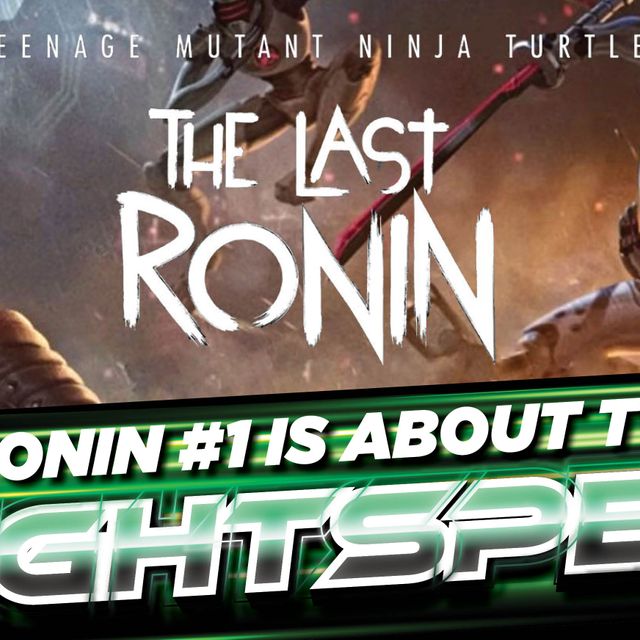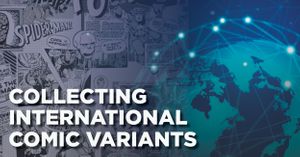 If you have been collecting comics for a while, you probably own a few foreign editions of American comics. While traveling outside of America, did you seek some four-color super-souvenirs of your travels? Maybe you have wondered how many different languages fill word balloons for your favorite titles. I do have those experiences, but nothing like my guest subject-matter-expert for this article. In a conversation with Tony Pomilla, I've asked Tony to share his experiences and expertise in collecting International comic variants.
If you have been collecting comics for a while, you probably own a few foreign editions of American comics. While traveling outside of America, did you seek some four-color super-souvenirs of your travels? Maybe you have wondered how many different languages fill word balloons for your favorite titles. I do have those experiences, but nothing like my guest subject-matter-expert for this article. In a conversation with Tony Pomilla, I've asked Tony to share his experiences and expertise in collecting International comic variants.
By the way, I write this from my own perspective as an American. But, I would love to hear from readers living outside the U.S. and their stories collecting American comics produced for international markets.
From Tony's collection, seven different editions of Joker #1. Top Row: USA, Spain, & Philippines. Bottom Row: Brasil, Brasil, USA, & Italy. The U.S.A. original version boasts a GoCollect FMV of $950 for graded 9.8. What do you think the foreign variants are worth?
Asking Tony About Collecting International Comic Variants
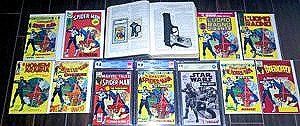 Before getting into this dialogue, I'll share my description of an "international variant". For discussion, an international variant is an edition of a comic book published for distribution outside the United States. That international variant comic may have been published after or in parallel with its American counterpart. Also, it may or may not be printed in English.
Before getting into this dialogue, I'll share my description of an "international variant". For discussion, an international variant is an edition of a comic book published for distribution outside the United States. That international variant comic may have been published after or in parallel with its American counterpart. Also, it may or may not be printed in English.
Tony Pomilla's collection of ASM #129 variants includes foreign editions from Mexico, Spain, Italy, Brazil, Greece, Russia, and Denmark. Also included, the original, the Marvel Tales reprint, and a Star Wars homage. Just for good measure and that special circumstance, he owns a hollowed-out Bible with Punisher-styled Beretta!
Tony's Origin Story
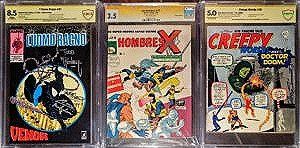 We all have stories about how we got started collecting comic books. If you collect niches like favorite character Deadpool or favorite artist Greg Capullo, then you may spin a yarn about how that began. I asked Tony to share his international variants origin story.
We all have stories about how we got started collecting comic books. If you collect niches like favorite character Deadpool or favorite artist Greg Capullo, then you may spin a yarn about how that began. I asked Tony to share his international variants origin story.
Tony: "I collected as a kid from 1987 (age 12) -1994 (age 18). My dad took me to shows. He got really into it buying lots of books for me. About twenty years later, I started searching books on eBay and came across a Nederlands Edition of ASM #129. I found it so interesting I bought it. In October 2012 I had put together a near-complete set of all Batman #227 editions and took them to Long Beach Convention. Neal Adams signed them and I submitted for slabbing. In doing so, other fellow enthusiasts doing the same thing were able to find me. There were probably less than 10 people publicly online in 2012."
 A lot of Tony's story is familiar. Your Dad or Mom probably bought comics for you in the early days as well. Then, it's fascinating but familiar that Tony started with one- a comic from the Netherlands. Soon, he had a huge set of Batman #227 foreign editions. Then, Tony enjoyed an amazing (and possibly expensive) experience with one of his fan favorites, Neal Adams. In doing so, he met "fellow enthusiasts" on the way.
A lot of Tony's story is familiar. Your Dad or Mom probably bought comics for you in the early days as well. Then, it's fascinating but familiar that Tony started with one- a comic from the Netherlands. Soon, he had a huge set of Batman #227 foreign editions. Then, Tony enjoyed an amazing (and possibly expensive) experience with one of his fan favorites, Neal Adams. In doing so, he met "fellow enthusiasts" on the way.
I took notice of Tony’s statement that only a few people actively and publicly collected variants when he started. How has this ‘niche’ grown?
What's the 'niche'?
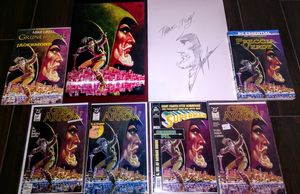 When I asked Tony about his niche, he indicated that currently, he scours the market for 130 foreign sets. The challenge and near-impossible objective: find every different edition of a comic like Amazing Spider-Man #129 or Brave and the Bold #28. Knowing how many great comics have been produced, one could spend lifetimes completing variant sets of each. Interestingly, ASM #129 travels better than Samsonite luggage. Over 50 different editions exist for Punisher's debut. In contrast, at the time of this writing, the U.S. version of Strange Adventures #205 shares the spotlight with only one foreign version. Since the comic introducing Deadman is shooting up Hotlists, maybe DC will make it available for more markets. Tony indicated the ratio of foreign variants tallies 72% DC, 27% Marvel, and 1% other.
When I asked Tony about his niche, he indicated that currently, he scours the market for 130 foreign sets. The challenge and near-impossible objective: find every different edition of a comic like Amazing Spider-Man #129 or Brave and the Bold #28. Knowing how many great comics have been produced, one could spend lifetimes completing variant sets of each. Interestingly, ASM #129 travels better than Samsonite luggage. Over 50 different editions exist for Punisher's debut. In contrast, at the time of this writing, the U.S. version of Strange Adventures #205 shares the spotlight with only one foreign version. Since the comic introducing Deadman is shooting up Hotlists, maybe DC will make it available for more markets. Tony indicated the ratio of foreign variants tallies 72% DC, 27% Marvel, and 1% other.
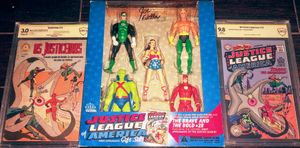 Let's get historical. Per Tony, Donald Duck holds the title for oldest foreign edition. The comic debuted in 1935 and again in 1943 with re-edited cover in Brazil. Superman #53 (1948) claims the status for the first set with a dozen total editions. Keep your eyes open for those ancient artifacts of foreign intrigue. Tony complains he owns only 7, with no known complete sets in existence. I'm sure he would love to get those missing editions in his mailbox someday.
Let's get historical. Per Tony, Donald Duck holds the title for oldest foreign edition. The comic debuted in 1935 and again in 1943 with re-edited cover in Brazil. Superman #53 (1948) claims the status for the first set with a dozen total editions. Keep your eyes open for those ancient artifacts of foreign intrigue. Tony complains he owns only 7, with no known complete sets in existence. I'm sure he would love to get those missing editions in his mailbox someday.
How Has Collecting International Comic Variants Grown and Why?
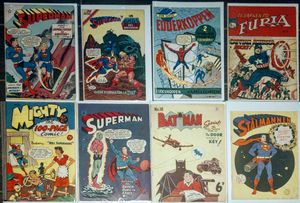 If you don't speak the language, why would you buy a Batman book from Italy? While some enjoy only their native food, others may want to sample Italian or Mexican food. Similarly, if you have a favorite comic, exploring various flavors sparks new interest. In that respect, Tony shared some of the variations among the U.S. and foreign editions. Per Tony, "Foreign editors will redraw, recolor, resize, and sometimes make the splash pages the covers." Tony caught Neal Adams laughing about a change to one of his covers. Foreign editors replaced an image depicting a damsel in distress with Robin. Adams indicated that publishers didn't pay royalties for any of his art used in foreign editions. I'm curious what happens in modern times where creators enjoy more of the pie.
If you don't speak the language, why would you buy a Batman book from Italy? While some enjoy only their native food, others may want to sample Italian or Mexican food. Similarly, if you have a favorite comic, exploring various flavors sparks new interest. In that respect, Tony shared some of the variations among the U.S. and foreign editions. Per Tony, "Foreign editors will redraw, recolor, resize, and sometimes make the splash pages the covers." Tony caught Neal Adams laughing about a change to one of his covers. Foreign editors replaced an image depicting a damsel in distress with Robin. Adams indicated that publishers didn't pay royalties for any of his art used in foreign editions. I'm curious what happens in modern times where creators enjoy more of the pie.
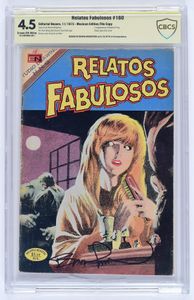 Tony reminisced that when he began, everybody knew just about everybody else. A small cast of characters enjoyed that slice of the hobby. That's no longer the case with "exponential" growth in interest and participation in the foreign collecting market. I asked Tony about the collectability from a speculative point of view. Also, how would one know if the price is right or not? Of course, I also wondered where collectors find the foreign variants. His strategy might work for you.
Tony reminisced that when he began, everybody knew just about everybody else. A small cast of characters enjoyed that slice of the hobby. That's no longer the case with "exponential" growth in interest and participation in the foreign collecting market. I asked Tony about the collectability from a speculative point of view. Also, how would one know if the price is right or not? Of course, I also wondered where collectors find the foreign variants. His strategy might work for you.
Tony: "Everyone starts on eBay. I started going into foreign pages/chat groups and used Google translator. [And] offered money to collectors to either buy or source books I was seeking. [The] same books that I loved as a kid from the Golden to Copper age. Before Facebook groups, I would print out flyers and mail them to comic shops in Australia of books I was seeking--[and ] I developed an excel spreadsheet of every contact and country. I always had repeat sellers because I would offer finder fees on big keys."
Shazam, Lightning Strikes, and You Start Collecting
 I wonder how "Shazam" translates? Just imagine all the different accents as kids around the globe attempted to become Captain Marvel!
I wonder how "Shazam" translates? Just imagine all the different accents as kids around the globe attempted to become Captain Marvel!
Finally, Tony indicated some foreign keys fetch top dollar. You might scour the thrift shops of Mexico. Apparently, the Mexican edition of the 1st Adam Strange would be worth over a thousand dollars in ANY condition. If you have a copy, give him a break since Tony was nice enough to do this article!
While from an investment perspective, Tony prefers securities that pay a dividend. Clearly, he and many others have found a fascinating niche in the comic book industry to explore.
In part 2 of this article, I'll talk about original art for foreign variants.
Hey, influencers! We want you to join our Ambassador program!












